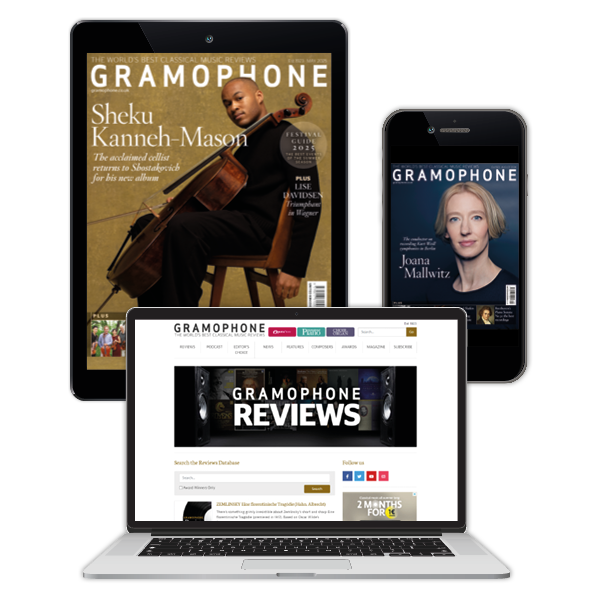Arutiunian Orchestral Works
View record and artist detailsRecord and Artist Details
Composer or Director: Kurt (Magnus) Atterberg
Label: Koch-Schwann
Magazine Review Date: 2/1998
Media Format: CD or Download
Media Runtime: 63
Mastering:
DDD
Catalogue Number: 315852

Tracks:
| Composition | Artist Credit |
|---|---|
| Concerto for Cello and Orchestra |
Kurt (Magnus) Atterberg, Composer
Berlin Radio Symphony Orchestra Karl Anton Rickenbacher, Conductor Kurt (Magnus) Atterberg, Composer Werner Thomas-Mifune, Cello |
| Sonata for Cello/Viola/Violin and Piano |
Kurt (Magnus) Atterberg, Composer
Carmen Piazzini, Piano Kurt (Magnus) Atterberg, Composer Werner Thomas-Mifune, Cello |
Composer or Director: Alexander Grigori Arutiunian
Label: Chandos
Magazine Review Date: 2/1998
Media Format: CD or Download
Media Runtime: 53
Mastering:
DDD
Catalogue Number: CHAN9566

Tracks:
| Composition | Artist Credit |
|---|---|
| Concerto for Violin and Orchestra |
Alexander Grigori Arutiunian, Composer
Alexander Grigori Arutiunian, Composer Constantine Orbelian, Conductor Ilya Grubert, Violin Moscow Chamber Orchestra |
| Sinfonietta |
Alexander Grigori Arutiunian, Composer
Alexander Grigori Arutiunian, Composer Constantine Orbelian, Conductor Moscow Chamber Orchestra |
| Concertino for Piano and Orchestra |
Alexander Grigori Arutiunian, Composer
Alexander Grigori Arutiunian, Composer Constantine Orbelian, Conductor Moscow Chamber Orchestra Narine Arutiunian, Piano |
Author:
The Cello Concerto (1917-22) does not exist in an alternative version, although the composer later created a nominal ‘Second’ from his Horn Concerto, Op. 28. I find Atterberg’s style tends to be identifiable by what it is not as much as by its own characteristics; in the Cello Concerto there are a variety of resonances of the sound worlds of others, especially the Sibelius of the Violin Concerto, while in the finale some of the orchestral writing points (briefly but remarkably) towards Villa-Lobos! It is a rather lovely piece, and receives a most sympathetic interpretation from Thomas-Mifune and Rickenbacher. The sound quality is nicely judged (warmer in the Sonata than either of the Marco Polo issues). Perhaps Koch will give us a similar coupling of the Horn Sonata and Concerto?'
Discover the world's largest classical music catalogue with Presto Music.

Gramophone Digital Club
- Digital Edition
- Digital Archive
- Reviews Database
- Full website access
From £8.75 / month
Subscribe
Gramophone Full Club
- Print Edition
- Digital Edition
- Digital Archive
- Reviews Database
- Full website access
From £11.00 / month
Subscribe
If you are a library, university or other organisation that would be interested in an institutional subscription to Gramophone please click here for further information.





